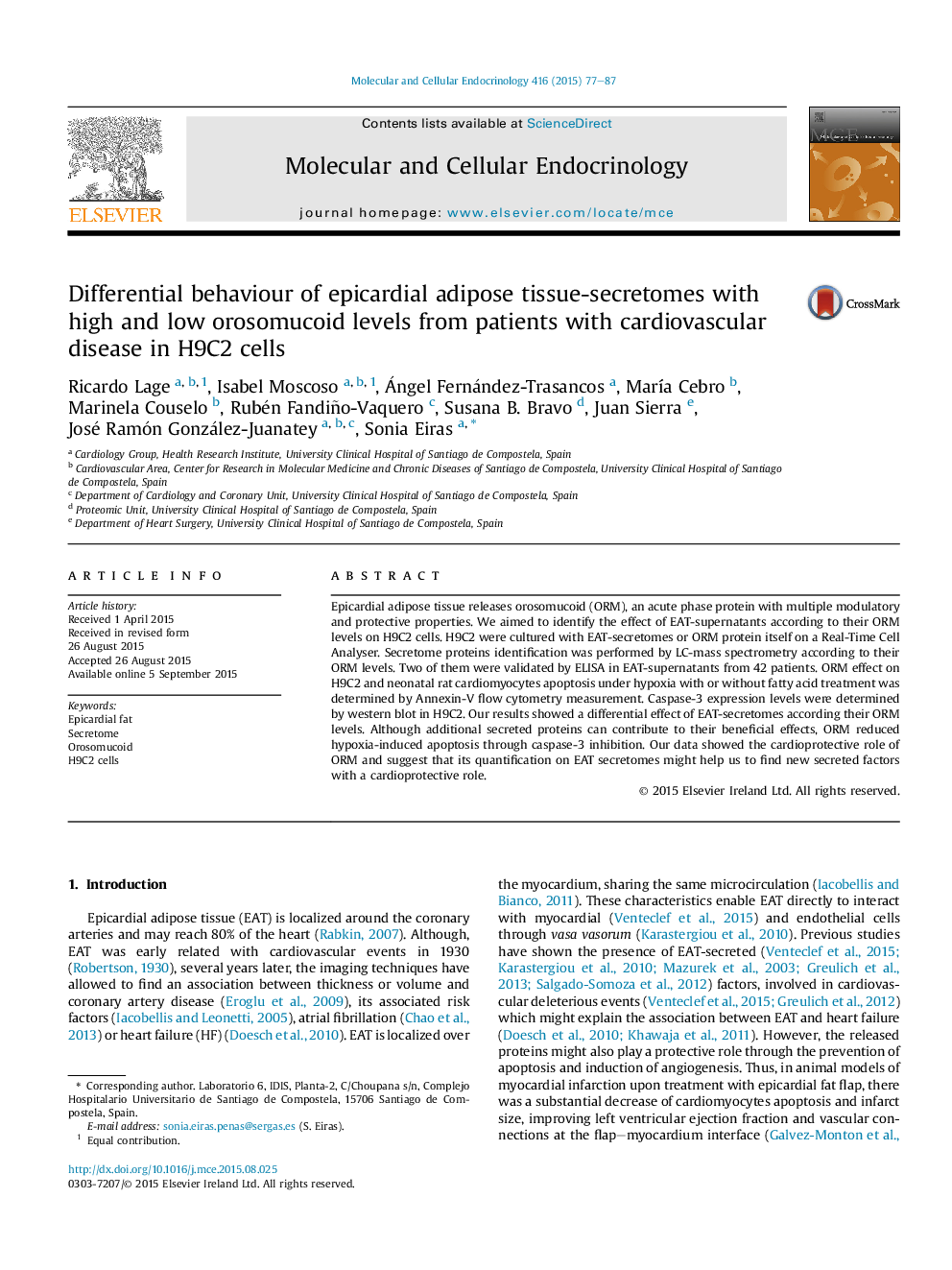| Article ID | Journal | Published Year | Pages | File Type |
|---|---|---|---|---|
| 2195782 | Molecular and Cellular Endocrinology | 2015 | 11 Pages |
•Epicardial adipose tissue secretomes have a differential effect on H9C2 cells regarding their ORM levels.•Classification of EAT secretomes regarding their ORM levels allow us to identify cardioprotective proteins.•ORM reduced hypoxia-induced apoptosis through caspase-3 inhibition on H9C2.
Epicardial adipose tissue releases orosomucoid (ORM), an acute phase protein with multiple modulatory and protective properties. We aimed to identify the effect of EAT-supernatants according to their ORM levels on H9C2 cells. H9C2 were cultured with EAT-secretomes or ORM protein itself on a Real-Time Cell Analyser. Secretome proteins identification was performed by LC-mass spectrometry according to their ORM levels. Two of them were validated by ELISA in EAT-supernatants from 42 patients. ORM effect on H9C2 and neonatal rat cardiomyocytes apoptosis under hypoxia with or without fatty acid treatment was determined by Annexin-V flow cytometry measurement. Caspase-3 expression levels were determined by western blot in H9C2. Our results showed a differential effect of EAT-secretomes according their ORM levels. Although additional secreted proteins can contribute to their beneficial effects, ORM reduced hypoxia-induced apoptosis through caspase-3 inhibition. Our data showed the cardioprotective role of ORM and suggest that its quantification on EAT secretomes might help us to find new secreted factors with a cardioprotective role.
